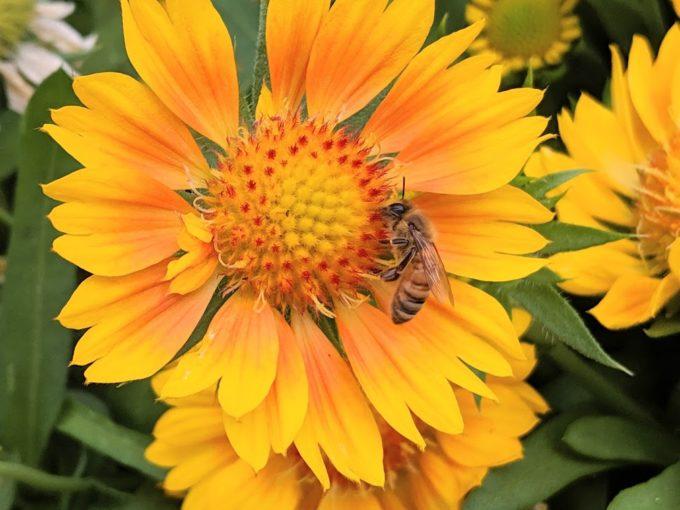The stars have aligned to make this a perfect time to invite pollinators into our perennial gardens. June is National Perennial Gardening Month! On top of that, the last full week of June is National Pollinator Week! That means there’s no better time than now to highlight the plants that will invite pollinators into our gardens and support them once they arrive.
Bees of all kinds are at the top of the pollinator workforce, but butterflies and hummingbirds are pollinators, too. Let’s look at some of the Colorado-friendly perennials that can help make our gardens beautiful pollinator havens for these amazing creatures.
Catmint, one of my bees’ favorites!
If the honey bees in my hive could vote on great plants for pollinators, I think catmint would definitely be on their Top Ten list.
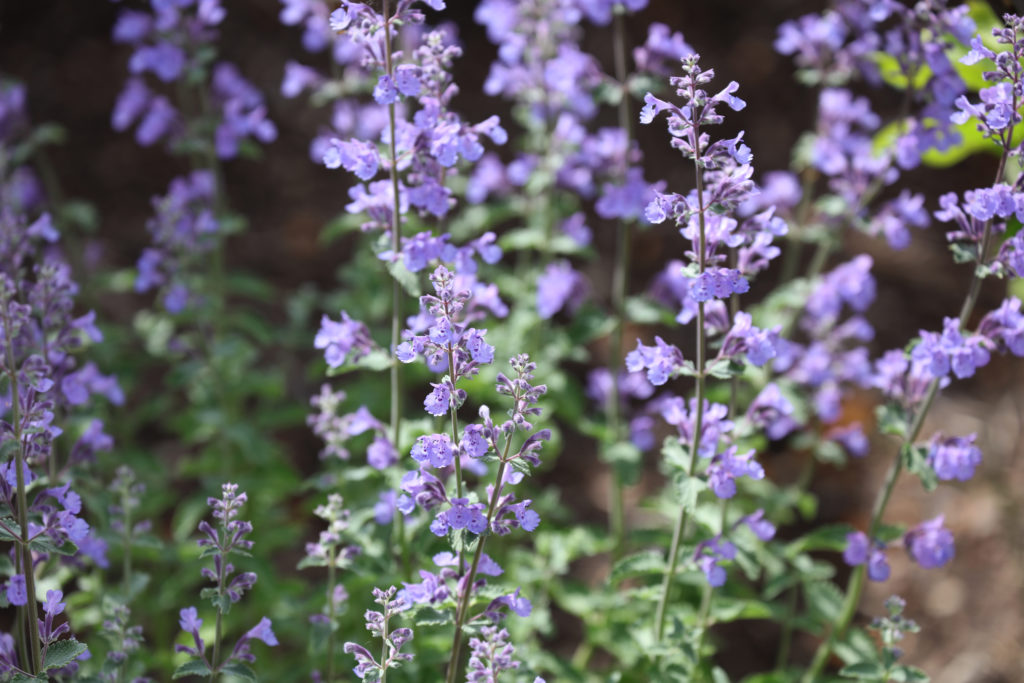
Catmint flowers are tiny, but there are so many of them! It’s not just honey bees that visit catmint. Colorado has some 950 varieties of native bees that are important to our environment, too. Many of these different native bees will be drawn to varieties of catmint, too. I’ve also seen butterflies on my catmint.
Catmint likes full sun and well-drained soil. It generally starts blooming in early June and continues to flower (with occasional shearing) throughout the summer. Some varieties are shorter, others are thigh-high tall or more. Some self-sow. Others may spread slowly if at all. But they’ll all attract bees, butterflies, and occasionally hummingbirds to any pollinator sanctuary you’re inclined to create in your garden.
Yarrow, a plant that looks right at home in arid Colorado
I don’t know whether it’s the clusters of sturdy looking “blossoms” or the almost-fringed, blue-green foliage, but to me yarrow looks just perfect in a drought-tolerant garden. It’s a great reminder that thriving pollinator gardens don’t have to look like lush cottage gardens.
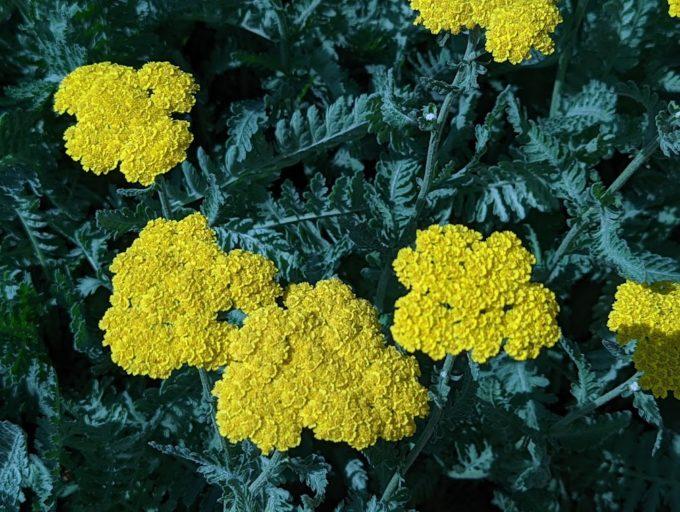
The common or native yarrows are wonderful for native bees and butterflies, but I also find lots of native bees on my non-native yarrows, too.
A closer look at the flowerheads reveals that they’re actually hundreds of very tiny flowers clustered together. My “Moonshine” yarrow is a regular stopping point for the tiny native bees that frequent my garden.
Yarrow comes into full bloom in May. It wants full sun, well-drained soil, and usually no more than one deep watering weekly after it’s established, meaning two full seasons in the ground. The spent flowerheads are wonderful in dried arrangements. Once the flowers and stalks are removed, yarrow routinely puts on another, slightly smaller, flush of color.
Penstemon, amazing for their variety, color, and bee-appeal
The different types of penstemons (a.k.a. “beardtongues), are nothing short of dazzling! And with basic T.L.C., these plants are real workhorses, too!
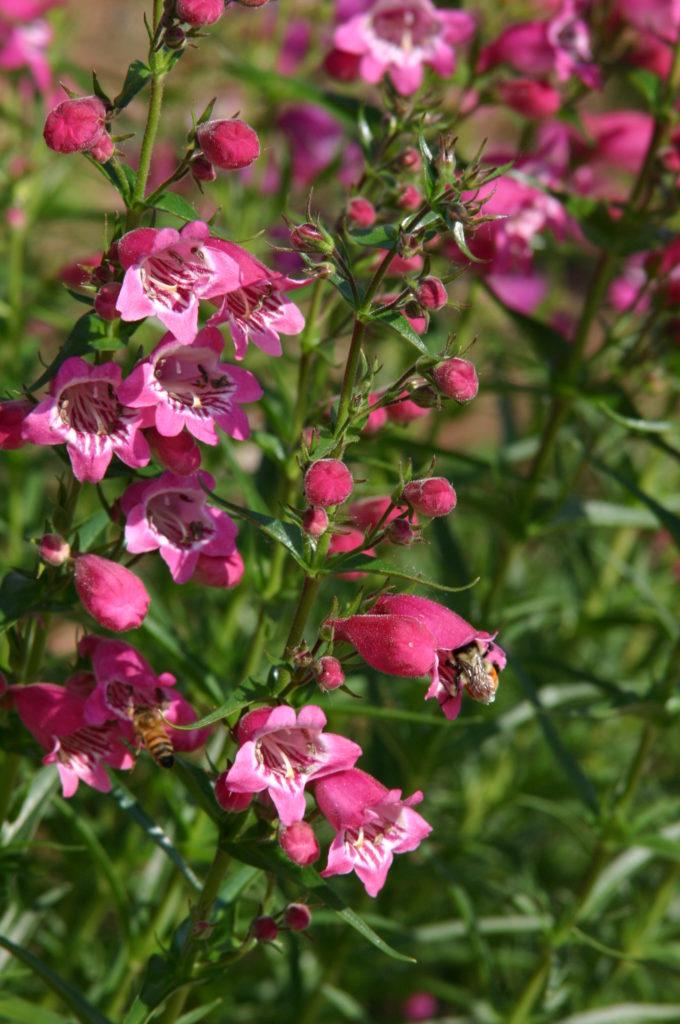
“Red Rocks” Penstemon, seen above, is certainly no exception. Red Rocks is part of the Plant Select collection of Colorado-tough perennials.
I all but laugh out loud every time I see a single large penstemon blossom “dancing” because one of our large native bumble bees is collecting pollen and nectar deep inside the tubular flower.
Penstemon come with beautifully different colors and flower forms. The plants thrive in full sun and do best with a deep watering once or twice a week, once established. Penstemon bloom all summer long with regular dead-heading (removal of fading flowers). They’re also deer-resistant.
Coneflowers, (a.k.a. echinacea)
Coneflowers are an excellent plant for almost any garden, but especially for pollinator gardens.
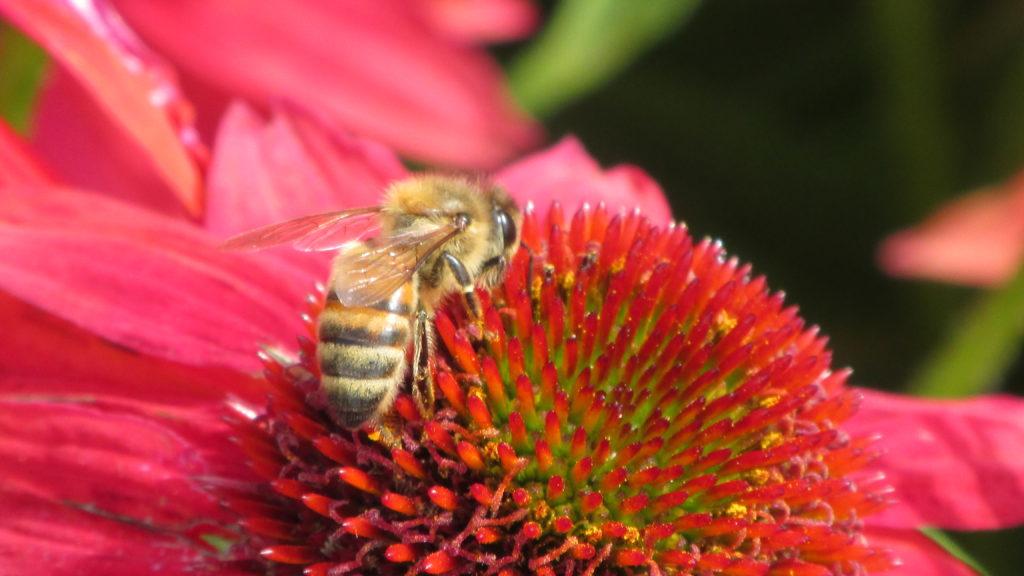
Coneflowers come in a wide variety of colors… white, yellow, peach, reddish-pink and more. They’ll bloom from late June to frost. Coneflowers prefer well-drained soil, but shouldn’t be allowed to go completely dry. A deep watering down to the root zone two or three times a week, once the plants are established,) should work well.
Blanket flowers (a.k.a. gaillardia): so much for pollinators to love
The daisy shape and rich colors of blanket flowers check so many boxes for the bees. The sunray pattern of the blossoms is Mother Nature’s way of creating an ultra-violet road map to the nectar and pollen at the center of each flower.
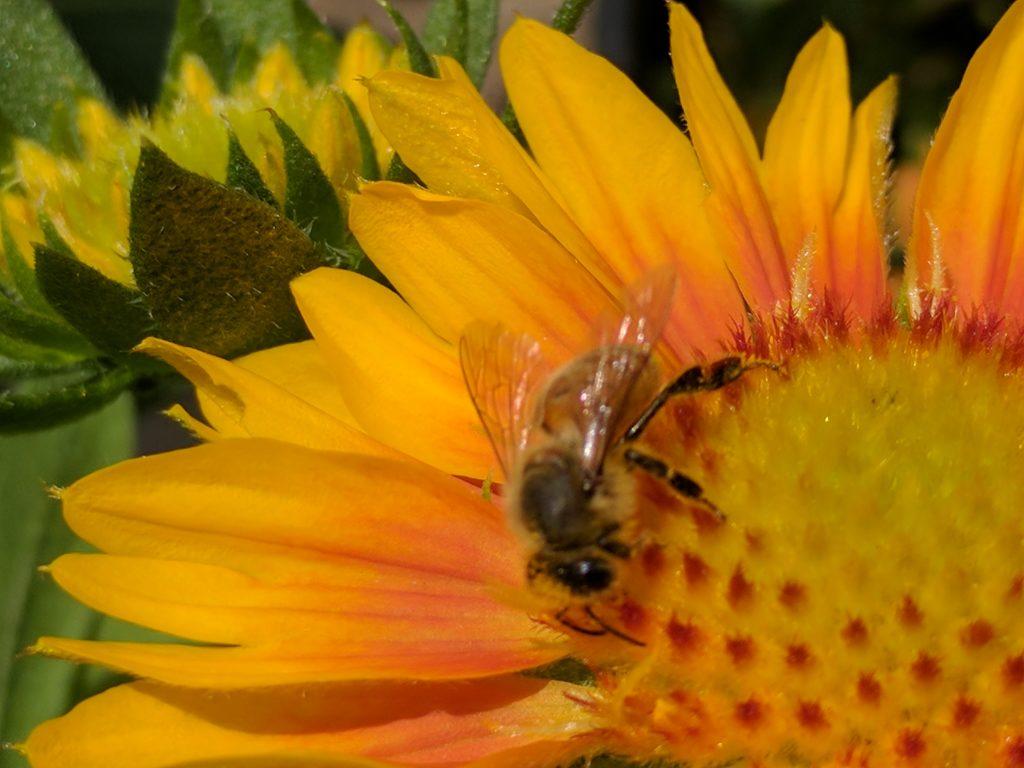
The warm yellows, oranges, and reds of blanket flowers reflect the beautiful colors of rugs and other artwork that are at the heart of so much Western Native American culture.
Blanket flowers demand full sun and well-drained soil. A planting site that stays soggy is a death sentence for these plants. Deep water them maybe once or twice a week when they’re first planted to get their root system established, then less frequently once they begin to mature.
Sedum, for some late-season color
In August, as many of the brighter, bolder pollinator plants start to wind down, I always look forward to the clusters of flowers on my sedum. Bees… all kinds of bees… just love sedum!
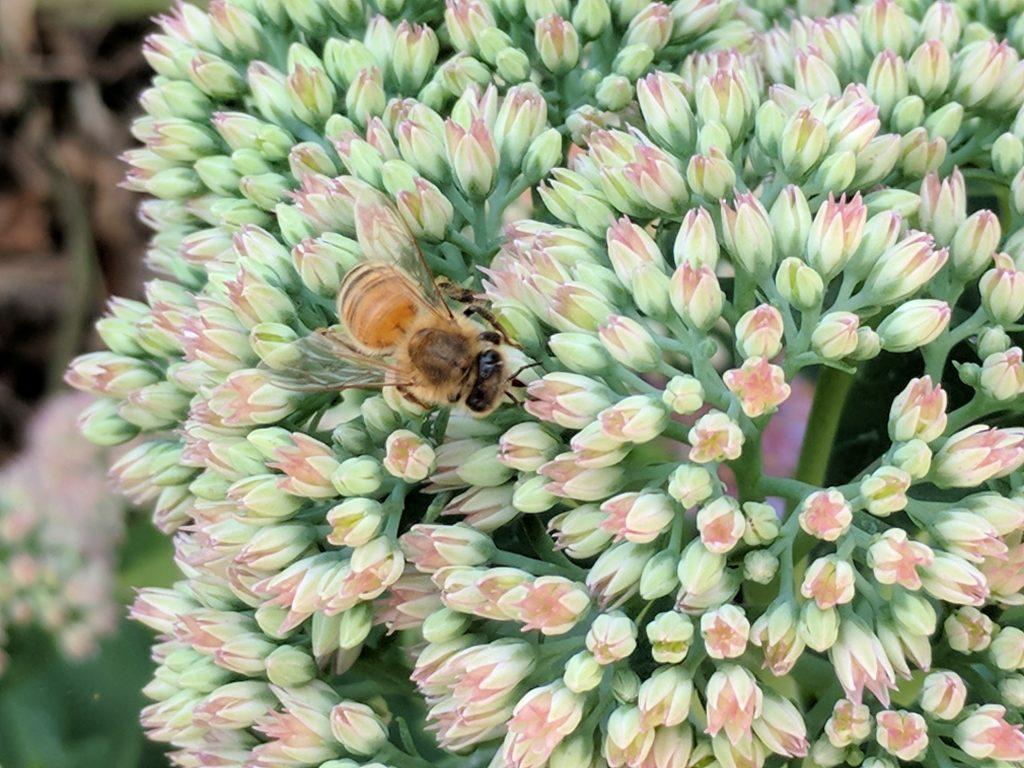
Sources of late-season nectar are especially important. Many varieties of sedum deliver that nectar when it’s so badly needed.
The sedum shown above, “Autumn Joy,” is one of my favorites. You can just see the soft mauve-pink petals that are opening, and already, this little honey bee is paying a visit.
All sedums are succulents. Full sun and extremely well-drained soil are a must. The plants’ stems can be brittle, so it’s best to grow them where they won’t be knocked about by kids or pets.
Would you like to find out more about plants that will invite pollinators into your yard? Stop by Tagawa Gardens today to talk to our experts!
